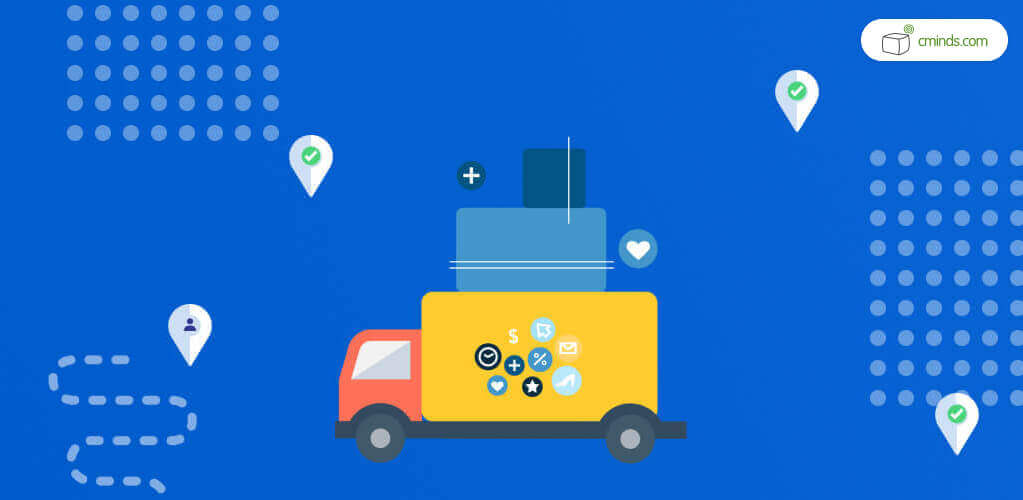When starting an eCommerce store, you’ll probably have tons of questions. One of which is Drop Shipping vs Marketplace: Which is best for me?

That is understandable, as the world of electronic commerce is imbued with what seems to be many difficult concepts and ideas. But they don’t have to be that hard: it’s all about taking some time to understand them.
For that, we’ll address these questions and give an overview of what is dropshipping and how it differs from a more conventional marketplace solution.
December 2024 Offer – For a Limited Time Only:
Get M2 Marketplace Multi-Vendor Manager for 25% off! Don’t miss out!
Complete Marketplace Dropshipping
M2 Marketplace turns your eCommerce into a complete marketplace and includes dropshipping support.
With this Magento 2 extension, you don’t have to choose: you can work both your inventory and your suppliers’.
Dropshipping

With DropShipping you don’t have to worry about keeping stock, labeling, and shipping. Instead, when you sell a product on your site, you actually purchase the item from a third party (wholesaler or manufacturer) and have it shipped directly to the customer.
If you are a startup or an entrepreneur looking to start an online store and sell products without needing to maintain inventory then DropShipping could be your answer. Dropshipping is an awesome option for startups or small business owners who don’t have inventory space, can’t handle shipping management, or delivery of items.
Lower Risk
For beginning online businesses, DropShipping can save both time and money and be a low risk option to get your feet off the ground in Ecommerce.
Dropshipping can take a load off your shoulders and allow you to focus on other essential parts of your business such as customer care and marketing your new online business.
Crate and Barrel is a great example of a successful store that uses DropShipping and created its own niche market in selling “home goods” by marketing and selling different vendors’ products.
There are many benefits to using a dropship service but it doesn’t come without its’ drawbacks. Below we have listed some pros and cons to see if DropShipping is right for you and your business:
Benefits

Positive Cash Flow: Because you don’t stock the product, you don’t pay for it until it’s sold.
Low Inventory Risk: DropShipping allows for cash flow flexibility; you only pay for what you sell. You aren’t tied down to your inventory and being “overstocked”.
Low Starting Cost: Ability to start selling without needing a lot of early investment and capital.
Scalability: Test new products on the market without having to buy in bulk and having to stress whether it will do well or not.
Ability to Try New Markets: DropShipping is international and has no borders. By making strategic partnerships with the right suppliers you can test new products to see if they are worth importing into your store.
Retain Customers: Add and expand your product selection as much as you want to keep your customers engaged and coming back to see what new items your store is selling.
Challenges

Stock Shortage: If your supplier has a hot item that is bought up quickly this could potentially put you in a sticky situation forcing you to refund unsatisfied customers.
Oversaturated Markets: Due to oversaturated markets you will have to research to find a niche market.
Customer Service Issues: Making sure to find a trustworthy and high quality supplier is crucial. Whatever errors your supplier makes will be your responsibility when dealing with customers.
Signing up for a DropShip service is only the start to an online business. It’s not just about the products you can sell but also the tools and resources that help make running your store easier.
If you’re looking for a way to sell products from multiple vendors without needing to maintain inventory, the multi vendor DropShip extension is your solution.
You should also consider an automated DropShipping platform such as Avasam, which lets you choose a product to sell from thousands of options.
Ecommerce Marketplace

Another great option for getting your foot into the door in Ecommerce would be the Ecommerce marketplace. Amazon, eBay, and Alibaba are some of the most popular and well known Ecommerce marketplaces.
The marketplace consists of highly-trafficked and well known websites where brands can set up shop and reach tons of new customers.
Unlike the dropshipping model, brands themselves are the ones doing the actual selling and shipping on Ecommerce marketplaces.
The Amazon marketplace is one of the most well known online shopping sites in the world and is the fourth most valuable company in the United States.
The Ecommerce marketplace is perfect for businesses looking to sell a large range of products and have access to a broad target market.
Benefits

Trusted Payment:If the marketplace you are using is well known and has a good reputation, buyers will have confidence.
Reduced Costs: Many marketplaces such as Amazon handle marketing, SEO, and order fulfillment for you.
International Shipping: Selling to customers abroad can be difficult due to high shipping costs. Marketplaces tend to offer affordable international shipping costs.
Challenges
Not Your Customers: The marketplace customers will always be just that: customers that belong to the marketplace. If you ever choose to leave the marketplace you will have to start all over again.
Conclusion: Which is Best For Me?

This all depends on your own personal brand and business goals. If you are looking into getting started in Ecommerce without having to work on marketing and logistics the marketplace could be the way to go. If you are looking for more of a niche market and to have control over your own domain and customer database then dropshipping may be for you.


